The medieval brass to John and Alice Wilcotes, St Michael and All Angels, Great Tew, Oxfordshire
- Michael Smith
- Sep 17
- 7 min read
Updated: Oct 8

The memorial brass to John and Alice Wilcotes is just one of the magnificent artifacts which await the visitor to the church of St Michael and All Angels at Great Tew in Oxfordshire. And what a brass it is!
A place which strips away time and takes you to a vanished world
If you can strip away the indifferent trappings of creeping aspiration and try to ignore the insidious and unachievable wealth which often surrounds you, a trip to the Cotwolds always rewards the traveller in search of inner peace. If you know where to look.
At Great Tew in Oxfordshire, beside a winding wall of golden Cotswold stone, is a curious early 17th century Italianate arch through which one enter to reach one of the finest churches in the county.
St Michael and All Angels at Great Tew is a church spanning many centuries. Of Norman origins, it contains architectural features from the 12th to the 15th centuries.
These include an original Norman doorway (with fourteenth century additions); 13th century pillars to the aisle; 14th century wall paintings and chancel arch; and a 15th clerestory, pierced by five windows on each side.
Yet perhaps the greatest feature of the church is none of these things. Instead, hidden ignominiously beneath a thick carpet for its own protection, the fabulous fifteenth century double-canopied brass to Sir John and Alice Wilcotes makes a visit here well worth the effort.
The life and career of Sir John Wilcotes
John Wilcotes was a man of power and influence, initially acquiring lands through marriage and then earning the friendship of powerful figures such as John, Lord Lovell and Thomas, Lord Despenser.
During his career, he served as a Member of Parliament for Oxfordshire (and briefly Kent) between 1399 and 1422 and also enjoyed several spells as High Sheriff of Berkshire and Oxfordshire.
Wilcotes seems to have been a born survivor in a time of political turmoil, particularly during the dangerous years following the end of Richard II’s reign and the coronation of Henry Bolingbroke (Henry IV).

It was during this time that a number of poems and romances were written which reflected on the duties of kings and their responsibilities. King Arthur's Death (the Alliterative Morte Arthure) highlights in particular the horrors wrought by war and regal irresponsibility.
Following the death of Henry IV in 1413, Wilcotes’ influence continued to grow under Henry V, in whose reign he served several wardships at the Exchequer while the king was away, advancing his aims in France.
His wife Alice, who is also commemorated on the brass, predeceased him in 1410; John remarried (Elizabeth Cheyne) sometime before 1417. Elizabeth remarried twice after John’s death and is thought to have died ca. May 1450, aged around 68.
The memorial brass to Sir John and Alice Wilcotes
Double-canopied memorial brasses are quite rare. That to Sir John and Alice Wilcotes is similar in size and proportion to that to Sir John de la Pole at Great Chrishall in Essex, but is a little later, dated to ca. 1422.

Sir John Wilcotes wears a full suit of armour; his helmet, though similar in appearance to that of Sir John de la Pole (right, below) reveals that the latter’s chainmail aventail has now been superseded by a gorget, seemingly of steel (although still with a rim of mail). Unlike John de la Pole, who wears a bascinet, Wilcotes wears what seems to be a visorless armet.
It is unfortunate that half of Wilcotes' great helm, on which he rests his head, is missing. To the right of his head we see the base of the helm and a chequered lambrequin; the recess to the left of his head shows where the top of his helmet and its crest would have been.
Compared to Joan Cobham, wife of John de la Pole at Chrishall (right, below), the representation of Lady Alice seems simple and almost funereal. Although Alice and John married sometime during the final years of Richard II (approximately between 1396 and 1399), she was to die in 1410, some twelve years prior to John, who died in May 1422. They had no children.
Alice’s dress may reflect either her early demise or possibly the fact that the monument was commissioned long after her death.
The brass does not celebrate John’s second wife, Elizabeth, nor their two legitimate daughters. This may reflect John’s acquisition of Great Tew through Alice and the fact that Elizabeth was not only still alive at John's death but also subsequently remarried.
In his will, John bequeathed Great Tew to his eldest daughter (also named Elizabeth), who was then aged four; the brass may also be seen as a visual assertion of her rights of inheritance and of his place in ensuring them.
Sadly, in comparison to that at Chrishall, the brass to John and Alice Wilcotes has suffered considerable wear over time, probably due to centuries of brass rubbing by admiring visitors. Today, the brass is kept under cover of a thick rug in the nave, which the visitor can roll back to see the monument.
Robert de Vere and Margery Dyve?
As well as other brasses (see gallery below), the church also contains two important tomb effigies from an earlier time. These are thought to represent Robert de Vere and possibly his widow Margery Dyve (occasionally written as Dyne).
The Dyves were a family of importance in Oxfordshire and are thought to have been one of the patrons of St Bartholomew’s church at Ducklington.
Margery is described as a nun of Godstow who, in 1314, gave a gift of the rectory and land at Great Tew to the abbey. She later served as its abbess from 1316 until her death in 1335.

If Margery was a nun by 1314, this suggests that Robert de Vere died prior to her taking orders and that his effigy - if it is his - can be dated prior to that.
Such a date means that the effigy at Great Tew cannot be Robert de Vere, 6th Earl of Oxford (1257-1331) who was married to Margaret Mortimer and buried at Earls Colne in Essex, a county which is also home to the magnificent Norman keep of Aubrey de Vere at Castle Hedingham.
While the subject of the memorial is unclear, the armour depicted by it is of an early type; the effigy is one of very few in England where the knight is shown to be wearing ailettes (protective shoulder guards).
The lack of detail on the effigy suggests that it is either unfinished, was some form of apprentice piece or, as is seemingly quite common, has been spent a considerable period of time outdoors.
The representation of the chain mail is very simple and appears not to have been carved at all. A comparison may be made with the effigies of Robert de Keynes at Dodford (Northamptonshire), William Boydell (restored) at Grappenhall (Cheshire), or William Marshal at Temple (London).
The effigy of William Boydell is of relevance; in this instance, nineteenth century restorers recreated the head and arm of the effigy based on what survived. The original may have been defaced or left outside during church restorations.
Passion Cycle
It is likely that the Passion Cycle of early fourteenth century paintings on the south wall of the nave is contemporary with these effigies.

Although now much faded and with much of the original pigmentation lost to time, the longevity of its ochre and red tints means that we can still see a variety of scenes and interpret their meaning.
Today, despite the light streaming in through the church's windows, it is hard to imagine that such paintings, as well as being fundamental narratives in their own right, were once a source of vibrancy and colour in what for many must have been a dark and frightening world.
Resting in this wonderful part of Oxfordshire it is hard to imagine now what life must have been like here when John and Alice Wilcotes held the manor at Great Tew.
Living in an England recovering from plague and seeing out the tyranny of Richard II's final years, theirs must have been a life of frightening uncertainty in deeply troubled times.
Though Alice was to die too young, Sir John was able to navigate these difficult years with skill, serving his county and his king until, like Henry V himself, he was to die in 1422.
Gallery showing features and architectural details at the church of Saint Michael and All Saints, Great Tew, Oxfordshire
Further information
Historic England listing for St Michael and All Angels, Great Tew, click here
For a comprehensive biography of the life and career of John Wilcotes, click here
About the author, Michael Smith

I am a British translator and illustrator of medieval literature. I am also a printmaker, with work in private collections worldwide.
My books, including a translation of Sir Gawain and the Green Knight and the Alliterative Morte Arthure, are available through all the usual outlets. My translation of The Romance of William and the Werewolf was published in 2024. All my books feature my own linocut prints as their illustrations.
To find out more about me, please click here
For more details of my books and how to purchase signed copies, click here.
Each of my blog posts, my website, illustrations and writing is the result of extensive research. If you would like to support me in my work, please do consider making a donation.






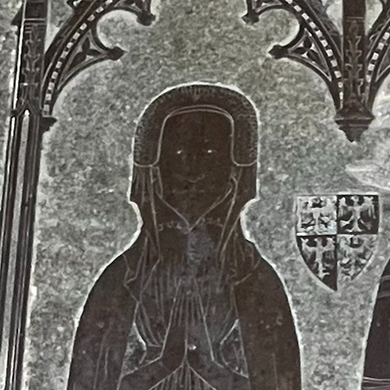



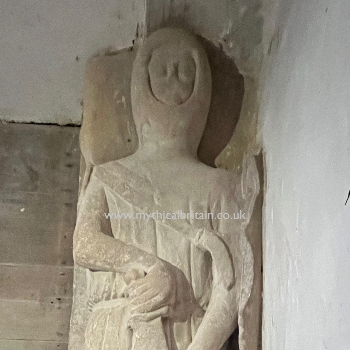

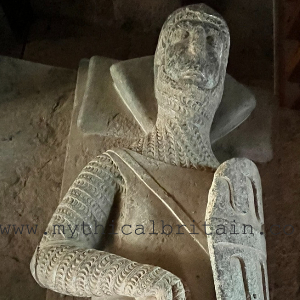



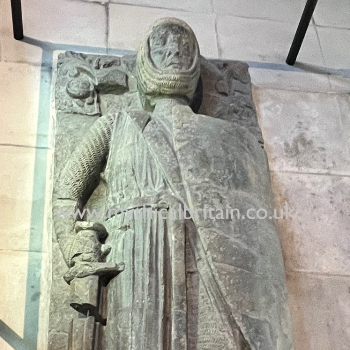

























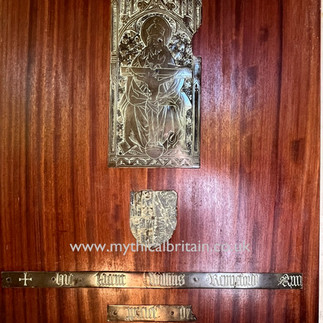











Comments